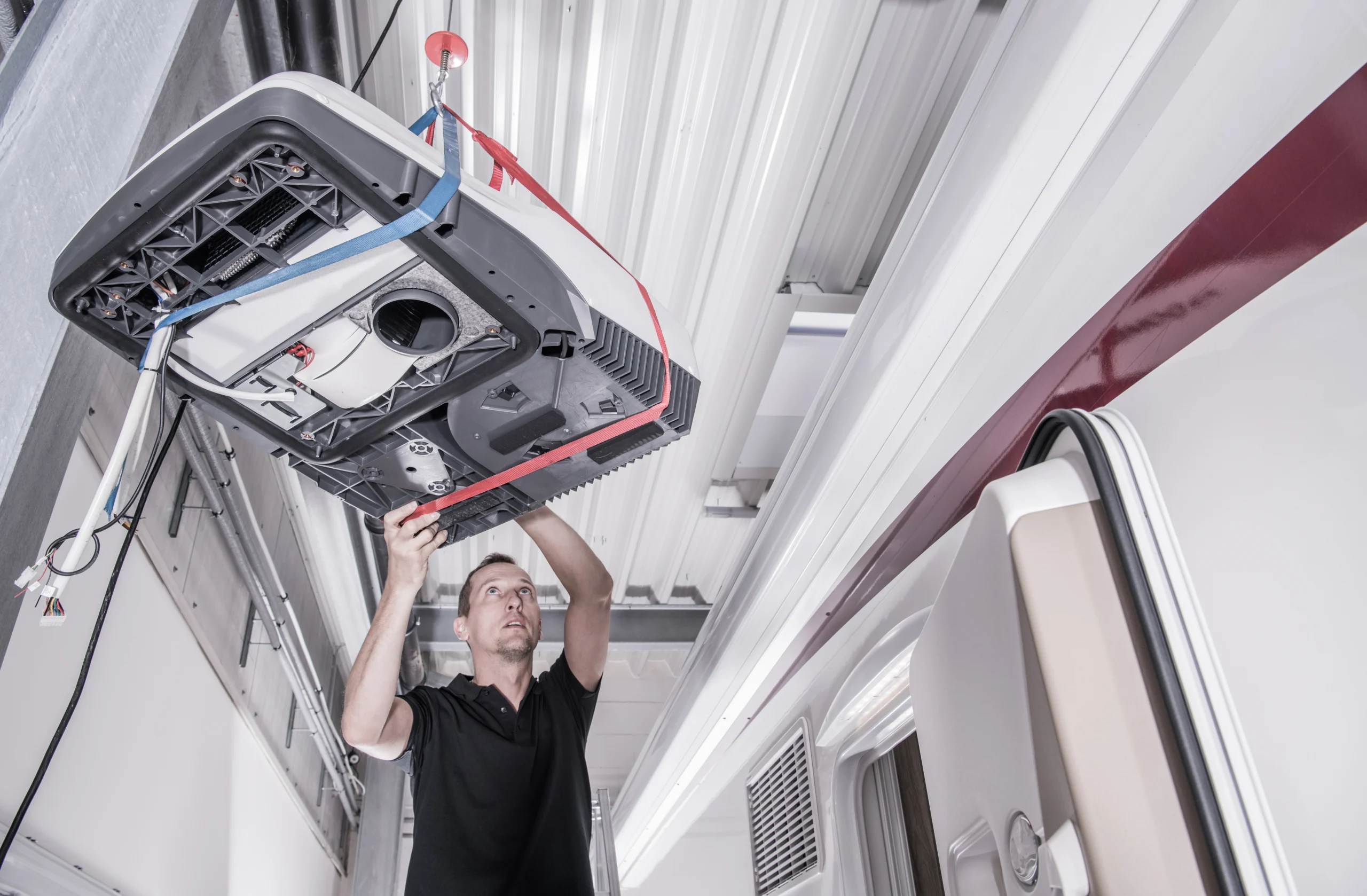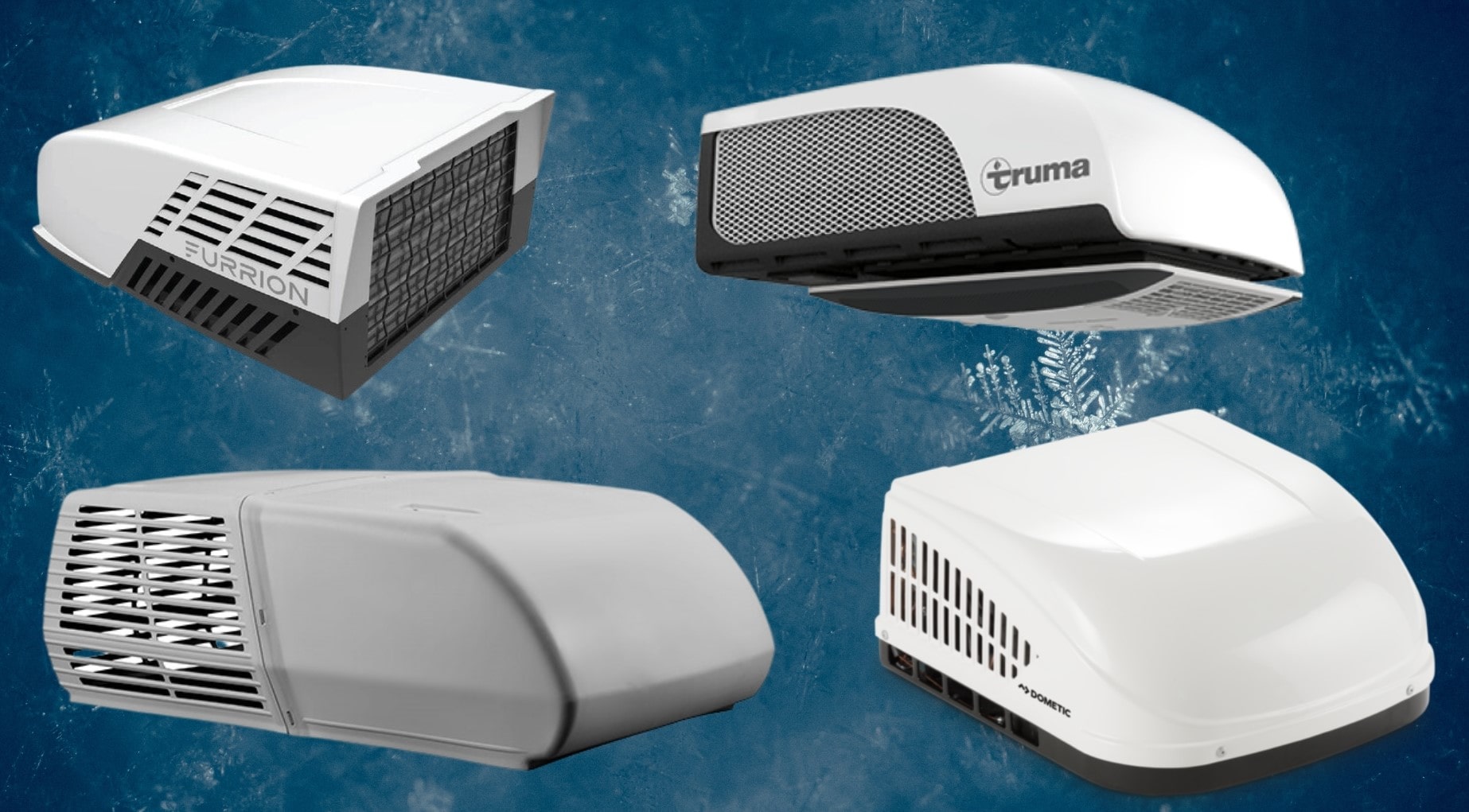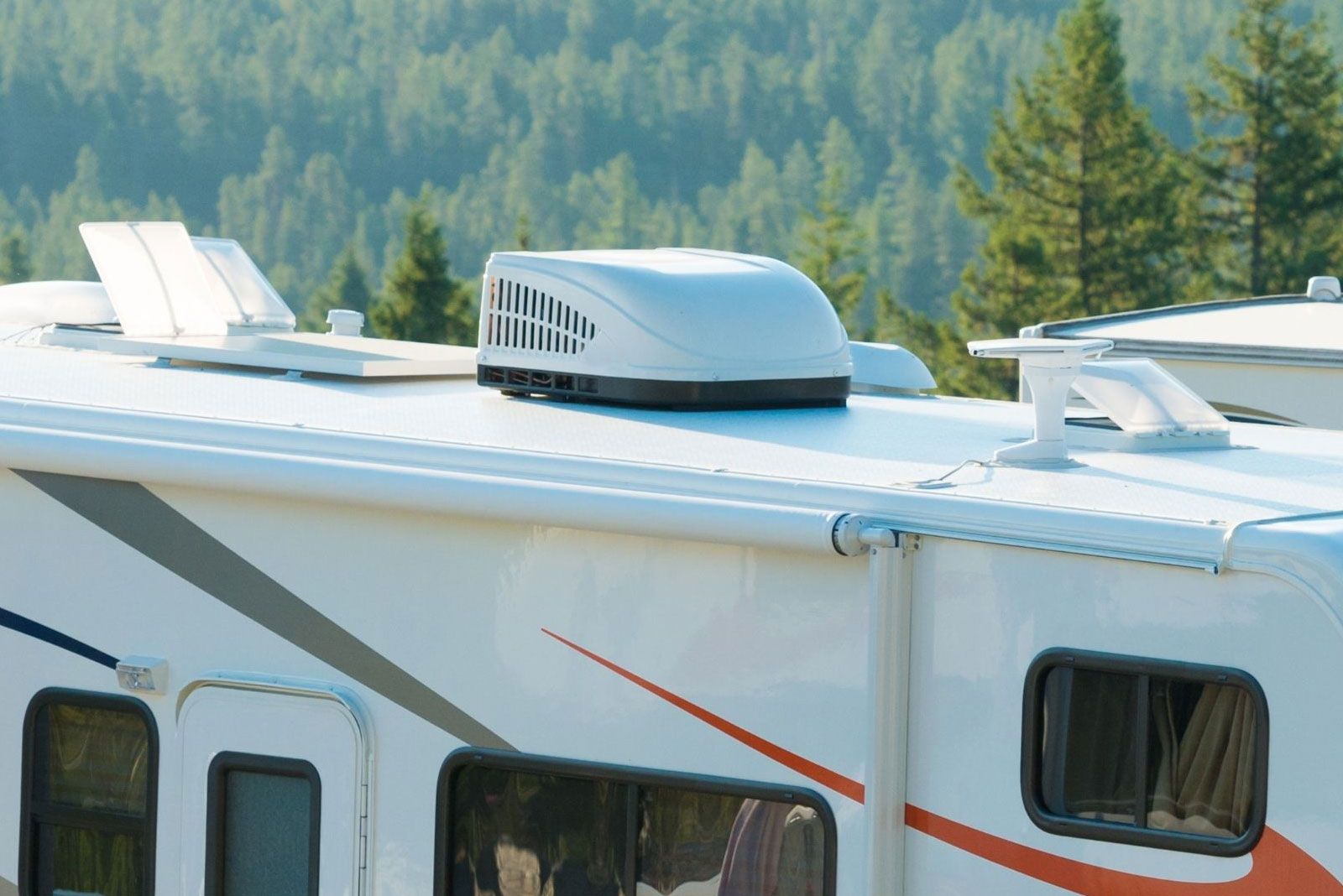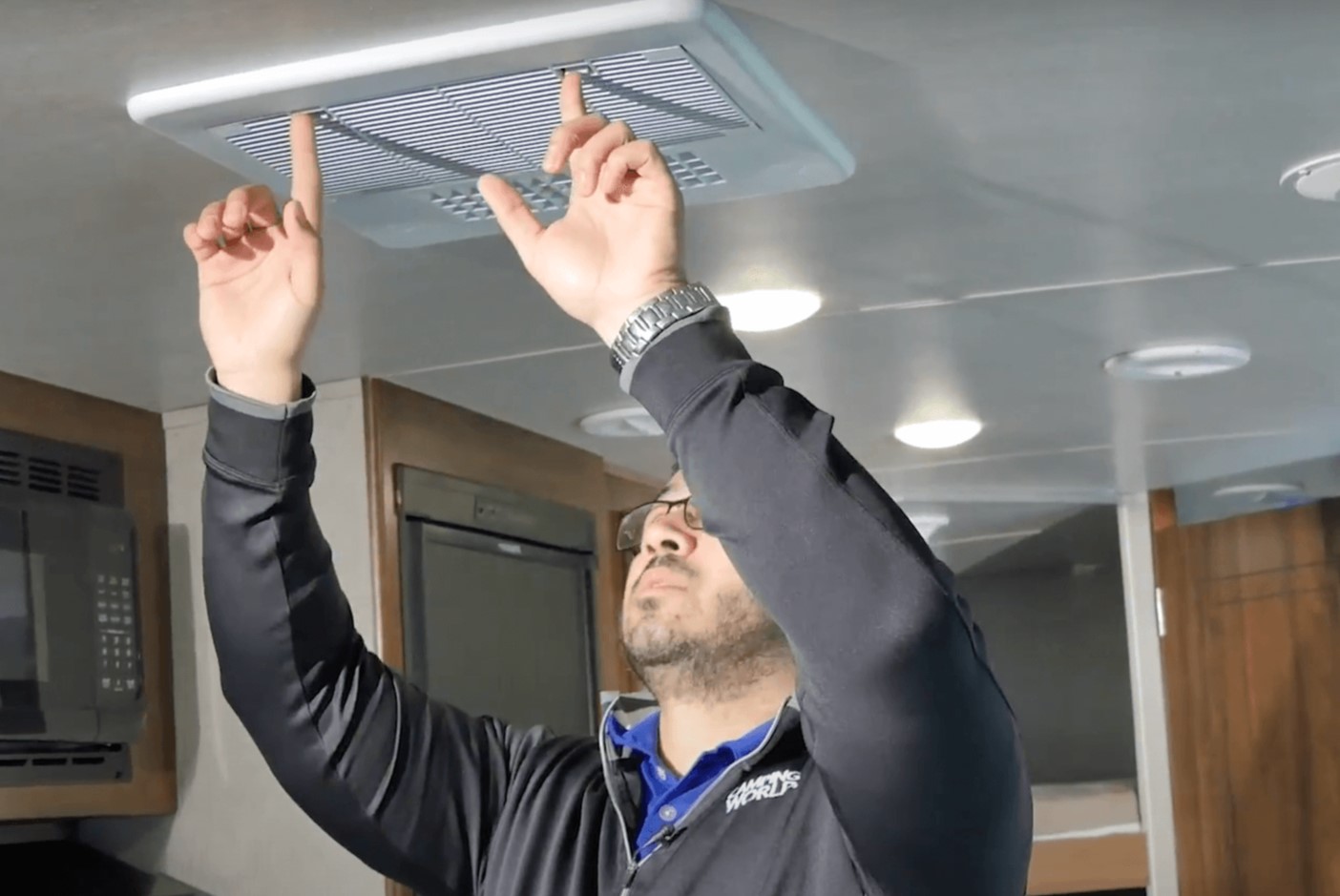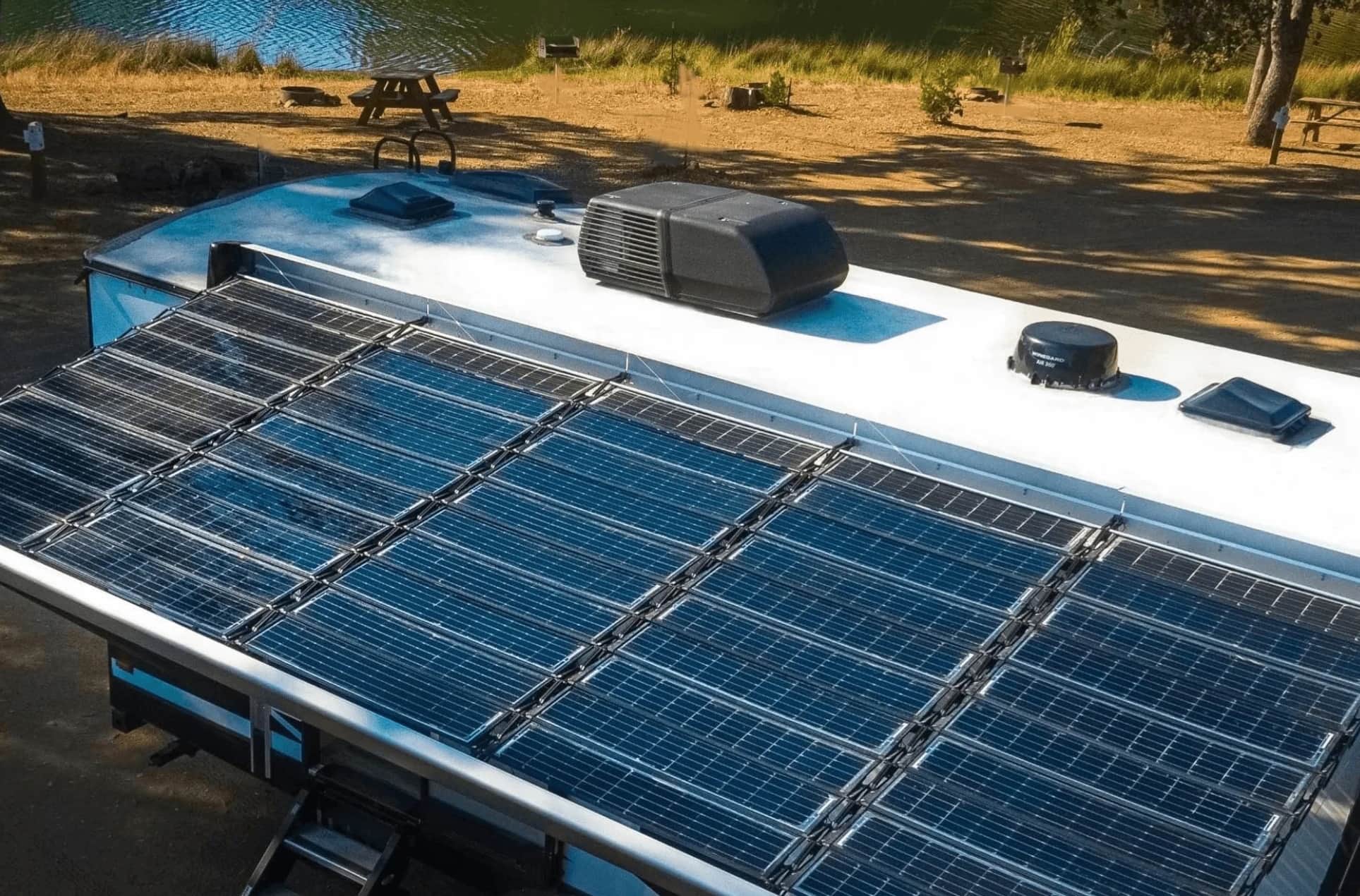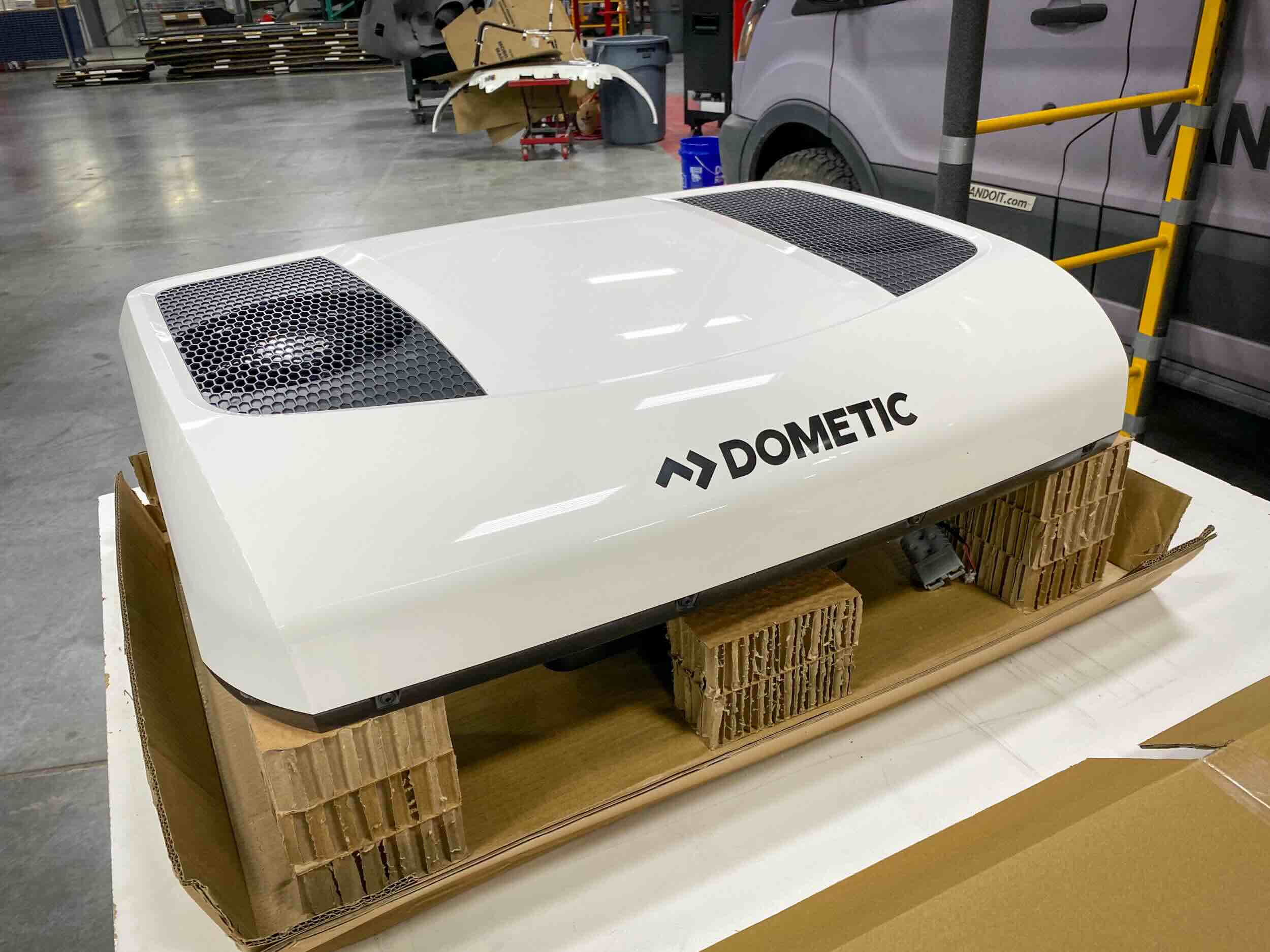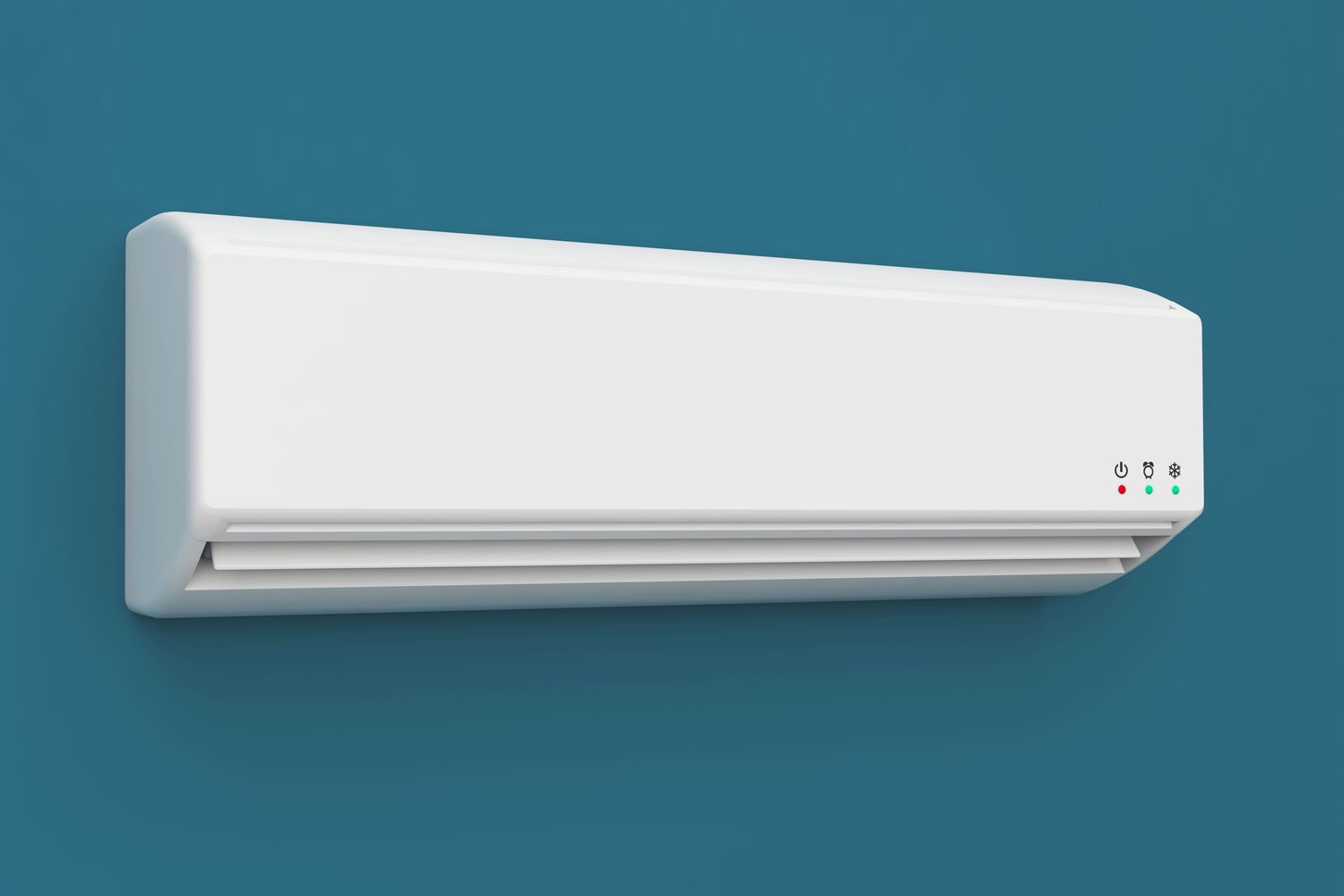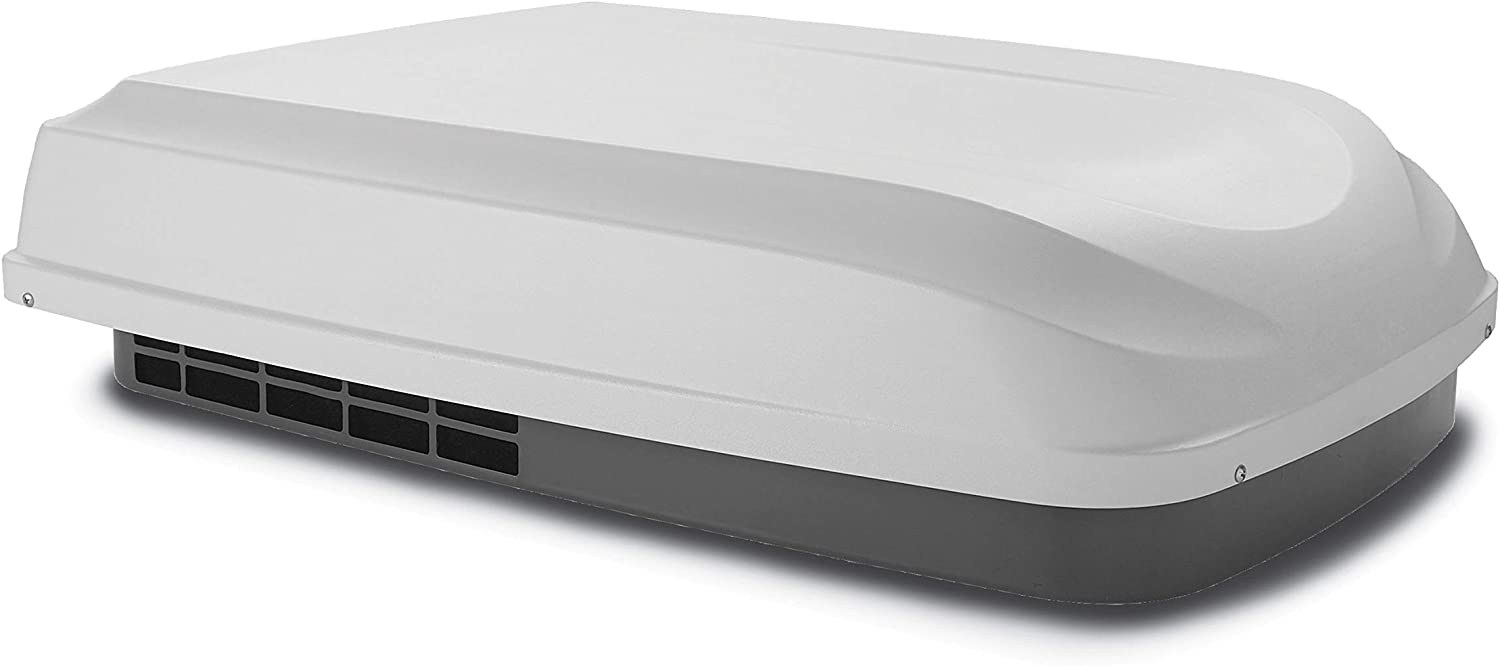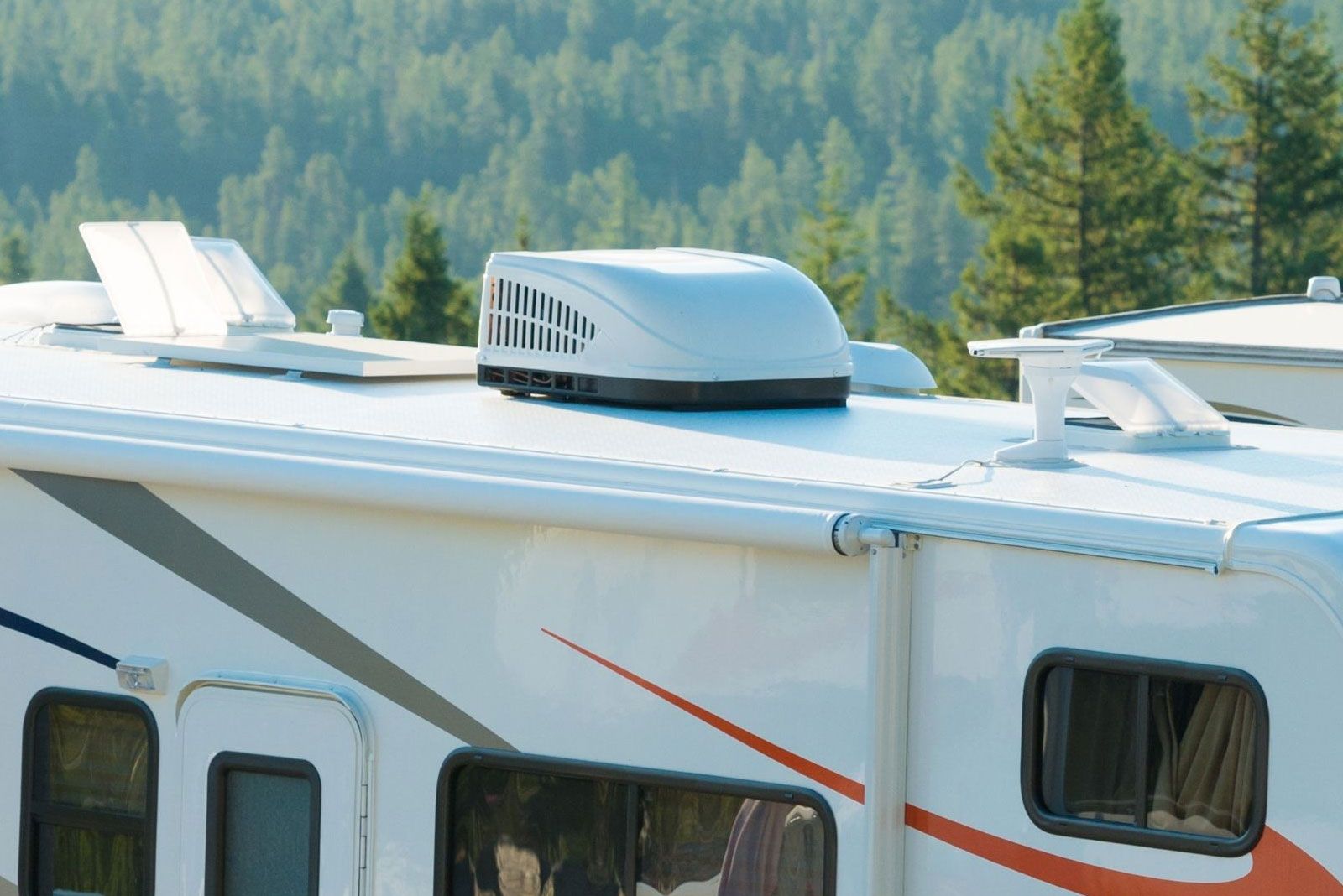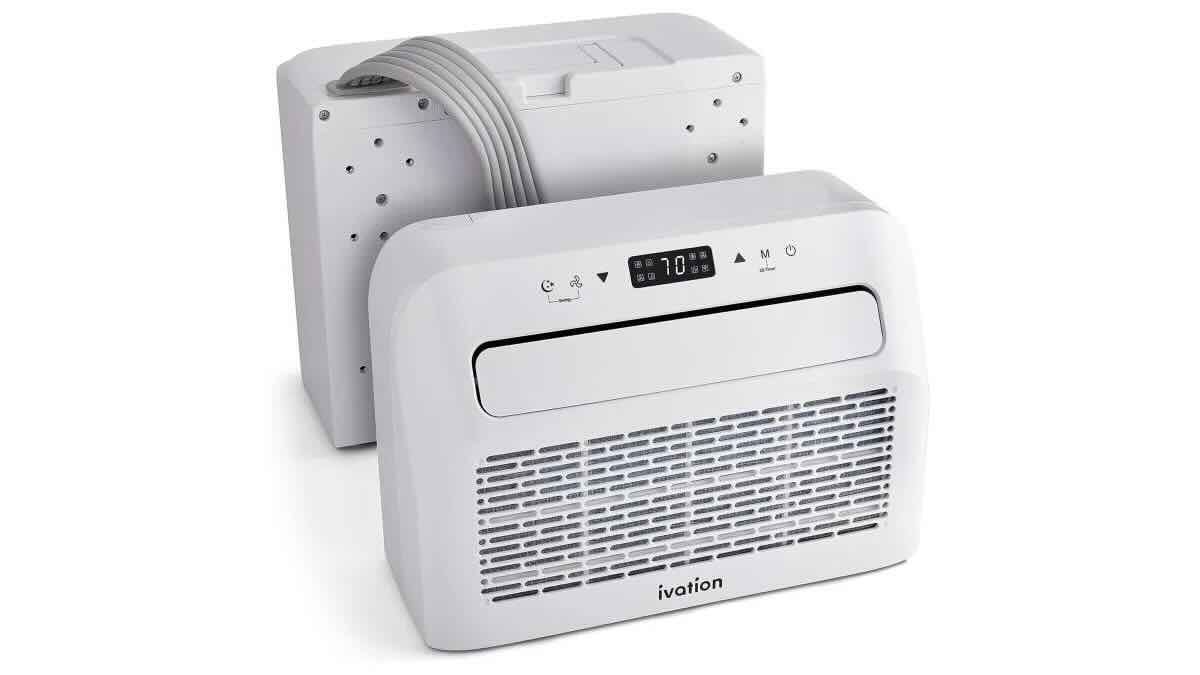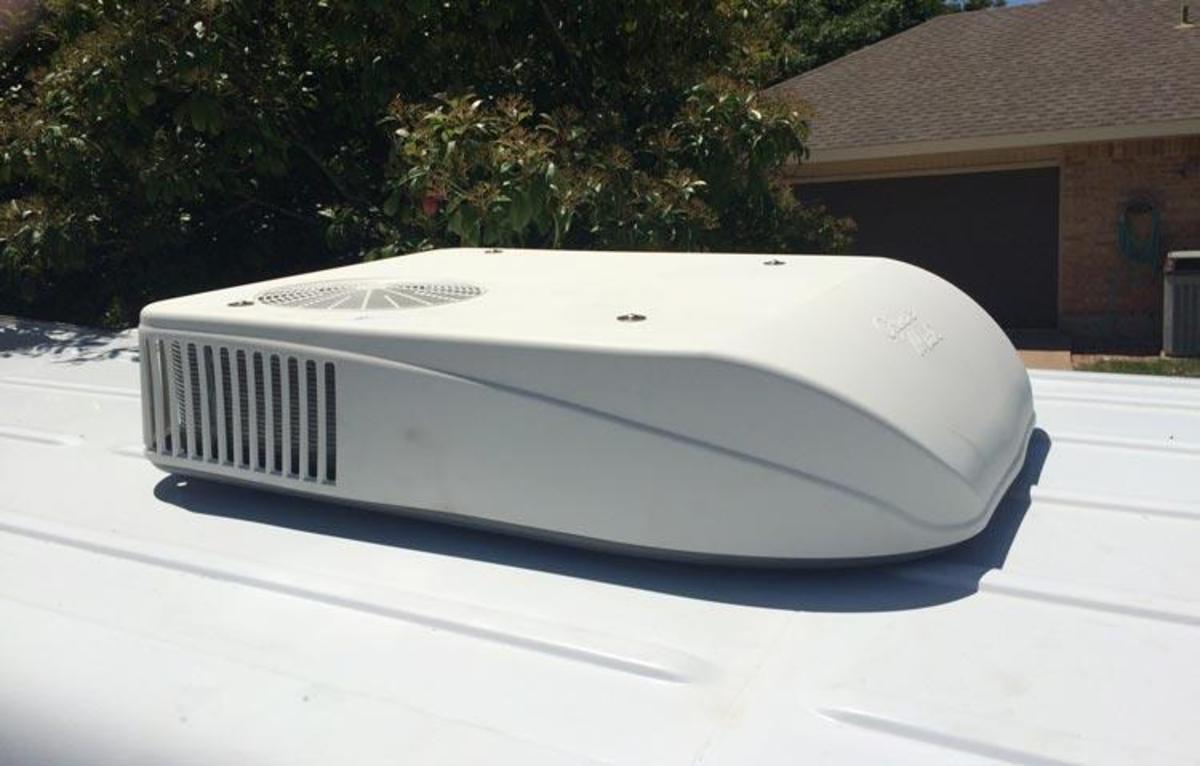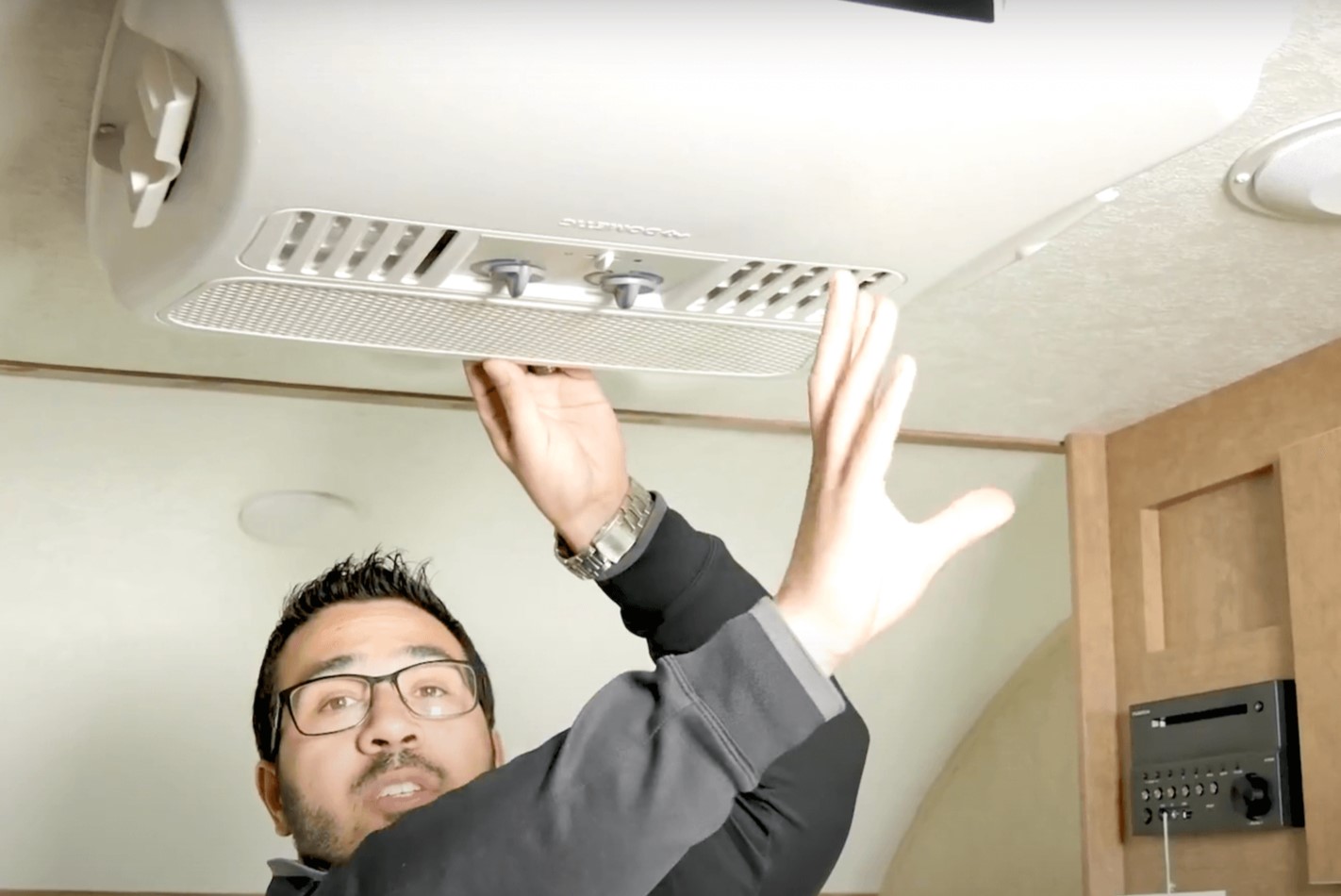Home>Home Maintenance>How Many BTUs Is My RV Air Conditioner
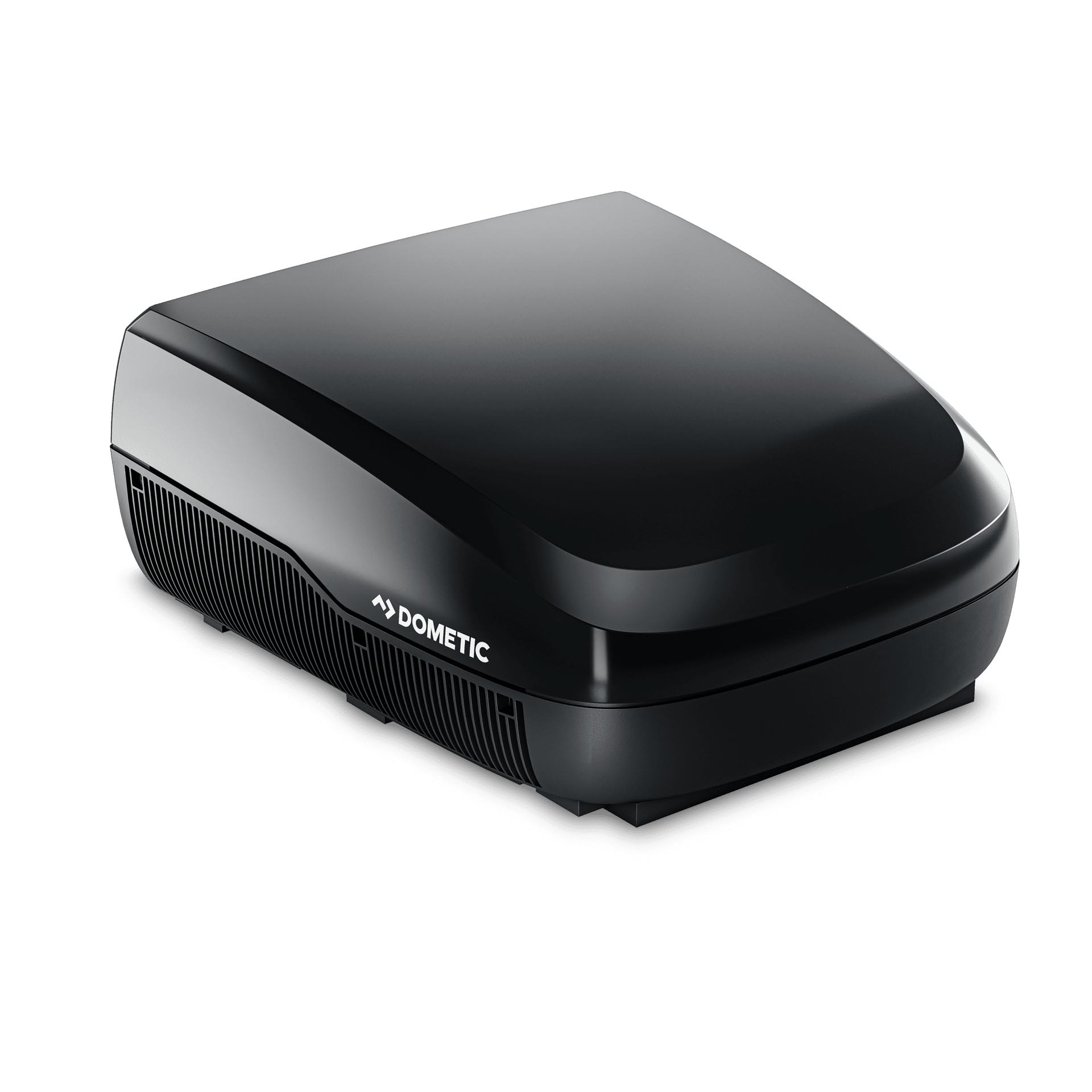

Home Maintenance
How Many BTUs Is My RV Air Conditioner
Modified: May 6, 2024
Find out the BTU rating of your RV air conditioner and ensure efficient cooling for your home on wheels. Discover how to maintain it with expert tips on home-maintenance.
(Many of the links in this article redirect to a specific reviewed product. Your purchase of these products through affiliate links helps to generate commission for Storables.com, at no extra cost. Learn more)
Introduction
Welcome to the world of RV ownership! Whether you’re a seasoned traveler or just embarking on your first adventure on the open road, one thing is certain – comfort is key. And when it comes to staying cool during those hot summer months, having a reliable and efficient air conditioner in your RV is essential.
But how do you determine the right air conditioner for your specific RV? That’s where understanding BTUs comes into play. BTUs, or British Thermal Units, are a measure of the cooling capacity of an air conditioner. By knowing the correct number of BTUs for your RV, you can ensure that your air conditioner is capable of effectively cooling the space.
In this article, we’ll delve into the world of BTUs and explore their importance when it comes to choosing and maintaining an RV air conditioner. From understanding the factors that affect the BTU requirements to calculating the necessary cooling capacity, we’ll provide you with all the information you need to make an informed decision.
So, let’s dive in and discover the science behind RV air conditioning, starting with a closer look at BTUs and why they matter.
Key Takeaways:
- Choose the right RV air conditioner BTU rating by considering factors like RV size, insulation, and climate. Opt for higher BTUs in extreme conditions or for larger groups.
- When upgrading or replacing your RV air conditioner, evaluate current cooling performance, consider future needs, and consult professionals for optimal BTU selection.
Read more: How Many BTUs Should An Air Conditioner Have
Understanding BTUs and their importance in RV air conditioners
Before we delve into the specifics of BTU requirements for RV air conditioners, let’s first understand what BTUs are and why they are crucial in determining the cooling capacity of an air conditioner.
BTU, short for British Thermal Unit, is a unit of measurement used in the heating, ventilation, and air conditioning (HVAC) industry. In simple terms, it measures the amount of heat an air conditioner can remove from a room or space. The higher the BTU rating, the more cooling power the air conditioner has.
For RV owners, determining the right number of BTUs for their air conditioner is essential to ensure efficient and effective cooling. If the air conditioner has too few BTUs, it may struggle to cool the RV adequately, resulting in discomfort during hot summer days. On the other hand, if the air conditioner has an excessively high BTU rating, it may waste energy and lead to higher electricity bills.
Factors such as the size of the RV, insulation levels, and the number of windows and doors all play a role in determining the BTU requirements for your air conditioner. It’s important to take these factors into consideration when selecting the appropriate BTU rating for your RV air conditioner.
In the next section, we will explore in detail the factors that can affect the BTU requirements for RV air conditioners.
Factors that affect the BTU requirements for RV air conditioners
When determining the BTU requirements for your RV air conditioner, several factors come into play. By understanding these factors, you can ensure that you choose an air conditioner with the appropriate BTU rating for your specific needs. Let’s take a closer look at these factors:
- The size of your RV: The size of your RV is a crucial factor in determining the BTU requirements for your air conditioner. Larger RVs will require air conditioners with higher BTU ratings to effectively cool the entire space. Conversely, smaller RVs can make do with air conditioners with lower BTU ratings.
- Insulation and sealing: The insulation and sealing of your RV play a significant role in maintaining the desired temperature inside. Well-insulated RVs will require less BTUs, as the insulation helps retain cool air, while poorly insulated RVs may require higher BTU ratings to compensate for the airflow and temperature loss.
- Number and size of windows and doors: Windows and doors are potential areas where cool air can escape and hot air can enter your RV. If you have multiple large windows or doors, it’s crucial to account for this when determining the BTU requirements. More openings mean more heat transfer, which may require a higher BTU rating to cool the space efficiently.
- Climate and location: The climate and location where you typically use your RV can also impact the BTU requirements. If you primarily travel in hotter regions or during the peak of summer, you may need a higher BTU rating to combat the intense heat. On the other hand, if you primarily travel in cooler areas, a lower BTU rating may suffice.
- Occupancy and usage: The number of people occupying the RV and how the space is being used can also influence the BTU requirements. If you frequently host guests or have a large family, the additional body heat and increased occupancy may require a higher BTU rating to ensure everyone stays comfortable.
Considering these factors when choosing an RV air conditioner will help you find the optimal BTU rating for your specific needs. In the next section, we will discuss how to calculate the BTUs needed for your RV air conditioner.
Assessing the size and cooling capacity of your RV air conditioner
Assessing the size and cooling capacity of your RV air conditioner is crucial to ensure optimal cooling performance. Here’s a step-by-step guide to help you accurately determine the right BTU rating for your RV:
- Measure the length and width of your RV: Start by measuring the interior length and width of your RV. This will give you the square footage of the area that needs to be cooled.
- Calculate the square footage: Multiply the length by the width to get the square footage. For example, if your RV is 20 feet long and 10 feet wide, the square footage would be 200 square feet (20 x 10 = 200).
- Consider the height of the RV: Take into account the height of your RV, as taller ceilings may require an extra boost in cooling power. Generally, RVs have a standard height of 8-9 feet, but if yours is taller, you may want to factor this in when choosing the BTU rating.
- Adjust for insulation and other factors: Consider the insulation, sealing, number of windows, doors, and other factors mentioned earlier. If your RV is well-insulated, you can adjust the BTU rating downwards, while less insulation may require an adjustment upwards.
- Consult the BTU chart: Refer to a BTU chart or table that provides guidelines for BTU ratings based on square footage. These charts take into account the factors mentioned above and provide a range of BTU ratings suitable for different sizes and conditions of RVs.
- Choose the appropriate BTU rating: Based on your calculations and the BTU chart, select an RV air conditioner with a BTU rating that matches your requirements. Remember that it’s better to err on the slightly higher side if you find yourself in extreme climates or frequently host guests.
By following these steps, you can accurately assess the sizing and cooling capacity needed for your RV air conditioner. In the next section, we will discuss how to calculate the BTUs needed for your RV air conditioner in more detail.
How to calculate the BTUs needed for your RV air conditioner
Calculating the BTUs needed for your RV air conditioner is a straightforward process that involves taking into account the size and specific conditions of your RV. Here’s a step-by-step guide to help you determine the appropriate BTU rating:
- Measure the interior length and width of your RV: Use a measuring tape to determine the exact length and width of the interior space in your RV. This will give you the square footage that needs to be cooled.
- Consider the height of your RV: Take into account the height of your RV, as taller ceilings may require additional cooling capacity. If your RV has higher ceilings than the standard 8-9 feet, it’s advisable to adjust the BTU rating accordingly.
- Assess the insulation and sealing: Evaluate the insulation and sealing of your RV. If it is well-insulated and properly sealed, you may be able to choose an RV air conditioner with a slightly lower BTU rating. However, if the insulation is lacking, you might need to consider a higher BTU rating to compensate for potential heat loss.
- Factor in the number and size of windows and doors: Windows and doors can impact the cooling efficiency of your RV. If you have multiple windows or larger openings, it’s important to take this into account when calculating the BTU rating. More openings mean more potential heat transfer, which may necessitate a higher BTU rating.
- Consider the climate and location: Think about the typical climate and location where you will be using your RV. If you frequently travel in hotter regions or during the peak of summer, a higher BTU rating may be required to handle the increased heat load. On the other hand, if you primarily travel in cooler areas, a lower BTU rating may suffice.
- Refer to a BTU chart or calculator: Utilize a BTU chart or calculator specifically designed for RV air conditioners. These tools provide guidelines and recommend BTU ratings based on the square footage, height, insulation, and other factors. Input the relevant information about your RV and let the chart or calculator generate the appropriate BTU rating.
- Choose the right BTU rating: Based on your calculations and the recommendations from the BTU chart or calculator, choose an RV air conditioner with a BTU rating that meets your specific cooling needs. It’s generally best to select an air conditioner on the higher end of the recommended range if you anticipate extreme temperatures or expect to have a higher occupancy in your RV.
By following these steps and using a reliable BTU chart or calculator, you can accurately calculate the BTUs needed for your RV air conditioner. This ensures that you have a system that is capable of efficiently cooling your RV and keeping you comfortable during your travels.
Check the manufacturer’s specifications or the unit’s label to find the BTU rating of your RV air conditioner. It’s usually listed in the product manual or on the unit itself.
Read more: How Many Btus Is A Car Air Conditioner
Common BTU ranges for different types of RVs and their cooling needs
The BTU requirement for your RV air conditioner will vary depending on the size and type of your RV, as well as its cooling needs. Here are the common BTU ranges for different types of RVs and their corresponding cooling needs:
- Class A motorhomes: Class A motorhomes are the largest and most spacious RVs. They typically have multiple rooms, larger interiors, and higher ceiling heights. For Class A motorhomes, air conditioners with BTU ratings ranging from 13,500 to 30,000 BTUs are common. The higher end of the BTU range is suitable for larger motorhomes or those that travel in hotter climates.
- Class B and Class C motorhomes: Class B and Class C motorhomes are smaller than Class A motorhomes but still provide comfortable living spaces. These RVs are often more compact and have limited interior space. Air conditioners with BTU ratings ranging from 8,000 to 15,000 BTUs are commonly used in Class B and Class C motorhomes. Smaller motorhomes may lean towards the lower end of the BTU range.
- Travel trailers and fifth wheels: Travel trailers and fifth wheels come in a variety of sizes, from small and lightweight models to larger and more spacious options. The BTU requirements for these RVs can vary significantly depending on their size and level of insulation. BTU ratings for travel trailers and fifth wheels typically range from 8,000 to 15,000 BTUs. Smaller models and those with good insulation may fall towards the lower end of the range, while larger models or those used in hotter climates may require higher BTU ratings.
- Pop-up campers and truck campers: Pop-up campers and truck campers are compact and lightweight options for RV enthusiasts. These RVs generally have limited interior space and may not require as powerful air conditioners. BTU ratings for pop-up campers and truck campers typically range from 5,000 to 10,000 BTUs. The lower end of the range is often sufficient for these smaller RVs.
It’s important to note that the BTU ranges mentioned above are rough guidelines, and the specific BTU requirements for your RV may vary depending on factors such as insulation, climate, and personal preferences. Consider these ranges as a starting point and consult the manufacturer’s specifications and recommendations for your air conditioner to ensure you select the appropriate BTU rating for your specific RV.
In the next section, we will discuss considerations for upgrading or replacing your RV air conditioner based on BTU requirements.
Upgrading or replacing your RV air conditioner: Considerations for BTU requirements
If you’re considering upgrading or replacing your current RV air conditioner, it’s crucial to carefully assess the BTU requirements to ensure that the new unit is suitable for your specific needs. Here are some important considerations when it comes to BTU requirements for upgrading or replacing your RV air conditioner:
- Evaluate your current cooling performance: Take a moment to assess how well your current air conditioner is cooling your RV. If you find that it struggles to maintain comfortable temperatures or doesn’t cool the space efficiently, it may be an indication that you need a unit with a higher BTU rating. Conversely, if your current air conditioner is consistently overcooling or using excessive energy, a lower BTU rating may be more appropriate.
- Consider any changes to your RV: If you have made modifications to your RV, such as adding insulation, sealing openings, or altering the layout, these changes may affect the BTU requirements. Reassess the size of the space that needs to be cooled and take into account any improvements or changes that have been made. These modifications may allow you to choose an air conditioner with a different BTU rating.
- Factor in future needs: Think about any future plans or changes that may impact your RV’s cooling needs. If you anticipate traveling to hotter climates, adding more people or pets to your RV, or making other alterations that could affect heat transfer, it’s wise to select an air conditioner with a slightly higher BTU rating to accommodate these future needs.
- Consult with professionals: If you’re unsure about the BTU requirements for your RV or need assistance in choosing the right air conditioner, don’t hesitate to consult with HVAC professionals who specialize in RV cooling systems. They can provide expert advice based on the specific details of your RV and help you select the optimal BTU rating for your needs.
- Consider energy efficiency: While BTU requirements are essential for effective cooling, it’s also important to consider energy efficiency. Look for air conditioners with higher Energy Efficiency Ratio (EER) or Seasonal Energy Efficiency Ratio (SEER) ratings. These ratings indicate the unit’s energy efficiency, helping you strike a balance between cooling power and energy consumption.
By carefully evaluating your current cooling performance, considering any changes to your RV, factoring in future needs, consulting professionals, and considering energy efficiency, you can make an informed decision when upgrading or replacing your RV air conditioner based on BTU requirements.
In the final section, we will discuss other factors to consider when choosing an RV air conditioner based on BTUs.
Other factors to consider when choosing an RV air conditioner based on BTUs
While BTU rating is a crucial factor when selecting an RV air conditioner, there are other considerations to keep in mind to ensure you choose the right unit for your needs. Here are some additional factors to consider:
- Installation requirements: Before purchasing an RV air conditioner, it’s important to understand the installation requirements. Some units may require specific wiring or mounting configurations, and it’s essential to ensure that your RV is compatible with the chosen air conditioner.
- Energy consumption: In addition to considering the BTU rating, it’s important to think about the energy consumption of the air conditioner. Look for units that have higher Energy Efficiency Ratio (EER) or Seasonal Energy Efficiency Ratio (SEER) ratings, as these indicate better energy efficiency and lower operating costs over time.
- Noise level: Noise can be a significant factor when it comes to comfort in your RV. Consider the noise level of the air conditioner, especially if you are sensitive to sound or plan to use the unit during quiet hours in campgrounds. Look for air conditioners that have noise-reducing features or are known for their quiet operation.
- Compatibility with existing systems: If you are replacing an existing air conditioner or have other HVAC systems in your RV, it’s important to ensure compatibility with the new unit. Consult the manufacturer’s specifications and, if needed, consult with professionals to ensure that the new air conditioner will work seamlessly with your existing systems.
- Additional features: Consider any additional features or functions that you may desire in an RV air conditioner. Some units offer programmable timers, remote control operation, adjustable fan speeds, or even built-in heating capabilities for year-round comfort. Evaluate these features to determine their importance to your RV lifestyle.
- Warranty and support: Research the warranty and support offered by the manufacturer. A reliable warranty and accessible customer support can provide peace of mind, particularly when it comes to any potential issues or required maintenance for your RV air conditioner.
By considering these factors in addition to BTU requirements, you can ensure that you choose an RV air conditioner that not only provides the necessary cooling power but also meets your specific preferences and needs. Take the time to research and compare different options, read customer reviews, and consult with professionals to make an informed decision.
With the right RV air conditioner, you can enjoy comfortable and refreshing temperatures during your travels, creating a pleasant and enjoyable experience on the road.
Overall, selecting an RV air conditioner based on BTU requirements and these additional factors will help ensure that you have optimal cooling performance and a comfortable environment in your RV.
Your RV adventures await! Make the most of your travels by choosing the right air conditioner that meets all your cooling needs.
Conclusion
Choosing the right BTU rating for your RV air conditioner is essential for maintaining a comfortable and enjoyable environment during your travels. By understanding the factors that affect BTU requirements and carefully assessing the size and cooling needs of your RV, you can make an informed decision when selecting an air conditioner. Remember to consider factors such as insulation, the number of windows and doors, climate, and future plans to ensure the chosen BTU rating meets your specific needs.
Additionally, when upgrading or replacing your RV air conditioner, evaluate your current cooling performance, consider any changes to your RV, consult with professionals, and look for energy-efficient options. These considerations will help you choose an air conditioner that not only provides the necessary cooling power but also meets your preferences and minimizes energy consumption.
Keep in mind that BTU recommendations can vary for different types of RVs, such as Class A, Class B, Class C motorhomes, travel trailers, fifth wheels, pop-up campers, and truck campers. Consider the specific needs of your RV type and select an air conditioner within the recommended BTU ranges.
Furthermore, take into account other factors like installation requirements, energy consumption, noise level, compatibility with existing systems, and any additional features that enhance convenience and comfort in your RV.
By considering all of these factors, you can confidently choose an RV air conditioner that keeps you cool and comfortable throughout your adventures.
Remember, the right BTU rating goes a long way to ensuring your RV remains a haven of comfort and relaxation, no matter the destinations you explore.
Now that you’re equipped with the knowledge of BTUs and their importance in RV air conditioners, go forth and enjoy your travels with the perfect cooling companion for your RV!
Now that you've got a handle on the BTUs needed for your RV air conditioner, why stop there? Boost your unit's performance with our next read on optimizing air conditioner efficiency. You'll learn practical strategies to ensure your cooling system runs at peak performance, saving you both discomfort and dollars. Don't let a lackluster air conditioner put a damper on your adventures!
Frequently Asked Questions about How Many BTUs Is My RV Air Conditioner
Was this page helpful?
At Storables.com, we guarantee accurate and reliable information. Our content, validated by Expert Board Contributors, is crafted following stringent Editorial Policies. We're committed to providing you with well-researched, expert-backed insights for all your informational needs.
